The group exhibition reflects upon iconic themes through the latest works by Hyvönen, Leinonen and Sampsa.
Icons of Our Time
Riikka Hyvönen, Jani Leinonen & Sampsa
February 15-March 17, 2024
Zetterberg Gallery
Riikka Hyvönen, Jani Leinonen & Sampsa
February 15-March 17, 2024
Zetterberg Gallery
The group exhibition reflects upon iconic themes through the latest works by Hyvönen, Leinonen and Sampsa.
Erwin Laiho’s work Crater Alpha, 2023 has been acquired by the Finnish National Gallery Kiasma as part of their permantent collection. The artwork premiered in the artist’s first solo exhibition Extra Terrestrial at Zetterberg Gallery in December 2023.
Erwin Laiho’s conceptual sculpting revolves around the interconnected ascent of materials from natural minerals to consumer and digital technology. The artist explores the complex ontological relationship between matter, time, and the development of the universe. By transfiguring functional, digital devices, he strips them “of their pristine state of consumerist desire and physical autonomy in order to reveal an immanent vitality of the raw materials.”
Read more about the exhibition here
Jani Leinonen has once again joined forces with the prestigious Dolder Grand hotel in Zurich to portray his idea of Christmas in a colossal art project called 24 Wishes.
Leinonen’s light installation consisting of stained glass windows, will be on display in the hotels Canvas Bar & Lounge from 1 December 2023, transforming the space into an arena of colors and patterns.
To give his pieces deeper meaning, Leinonen asked 24 people from around the world – including artists, authors, mothers and children – to write a personal letter to Father Christmas. “The letters lend each light cube a special meaning that encompasses not only joy, but also grief, loss and the hope for a better world”.
The artist has assigned a letter to each of the cubes he has created. A new light cube illuminates every day, symbolizing that this particular wish is to be fulfilled and all the letters have been also compiled into a book.
Read more about project: Dolder Grand Hotel
Jani Leinonen’s sculpture ”McJesus” (2015) has a new permanent home in the recently opened Museu de l’Art Prohibit (Museum of Forbidden Art) in Barcelona, Spain.
The museum that opened for the public on October 26th, 2023 is built around Catalan businessman Taxto Benet’s collection, consisting of more than 200 artworks that have been censored, prohibited or denounced due to political, social or religious reasons.
The current display exhibits 42 works from the collection, including works by Francisco de Goya, Keith Haring, Pablo Picasso, Andy Warhol, and Ai Weiwei, amongst others.
Find out more about the museum on their website: Museu de l’Art Prohibit
Extra Terrestrial
November 3 -December 3, 2023
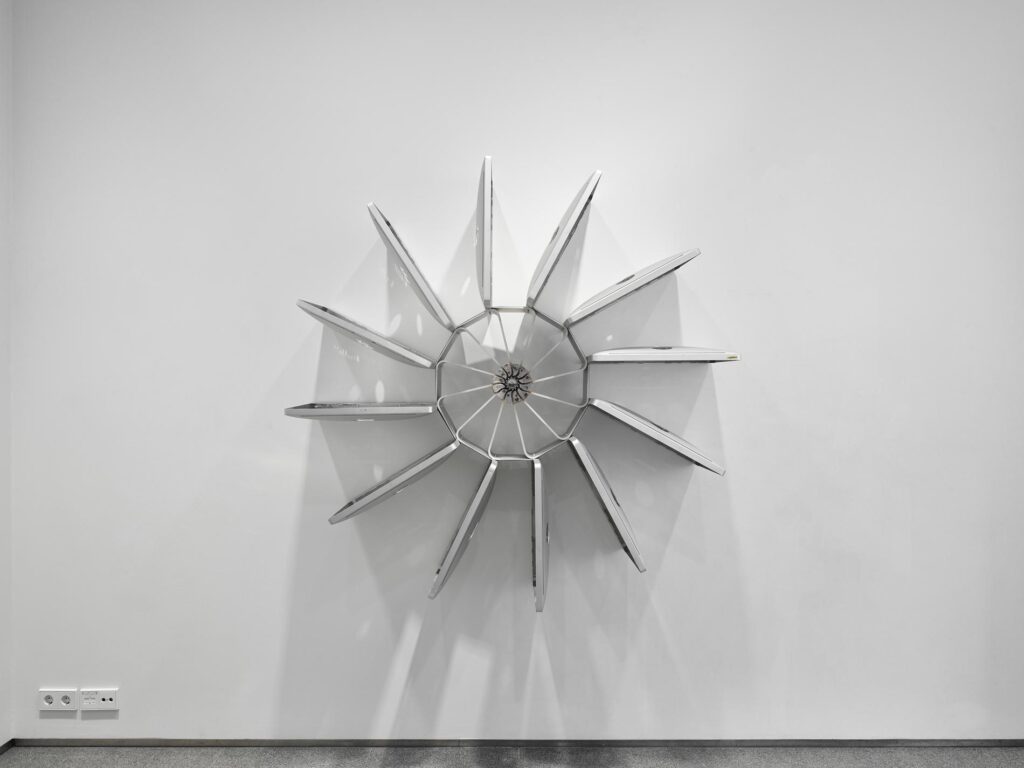
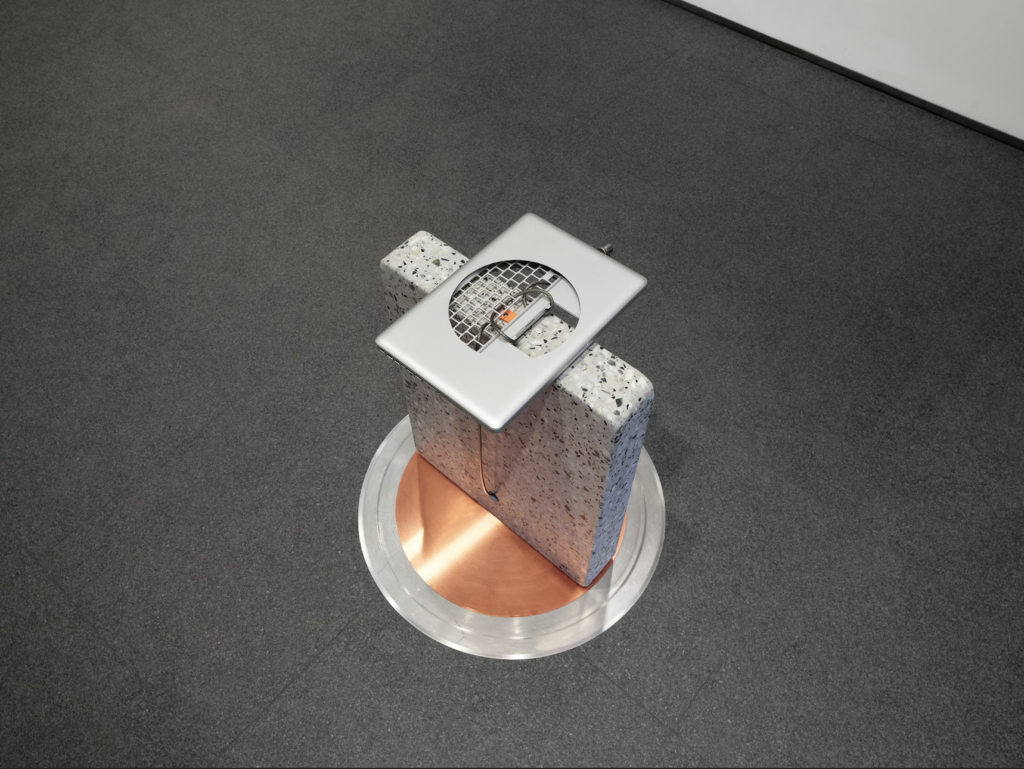
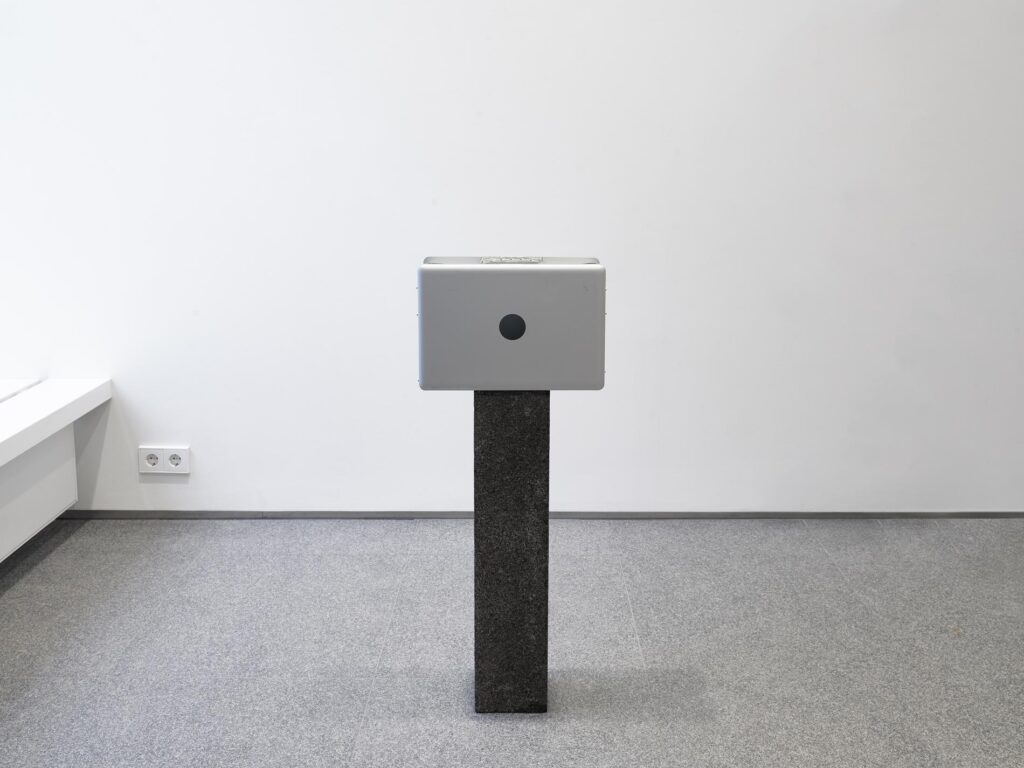
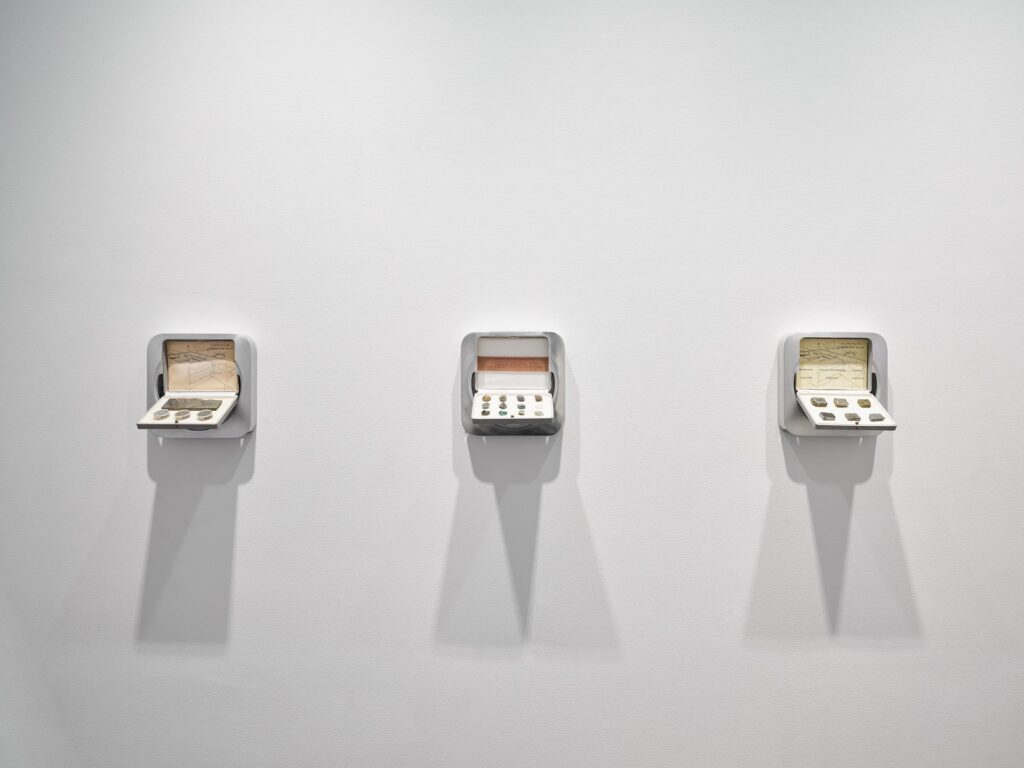
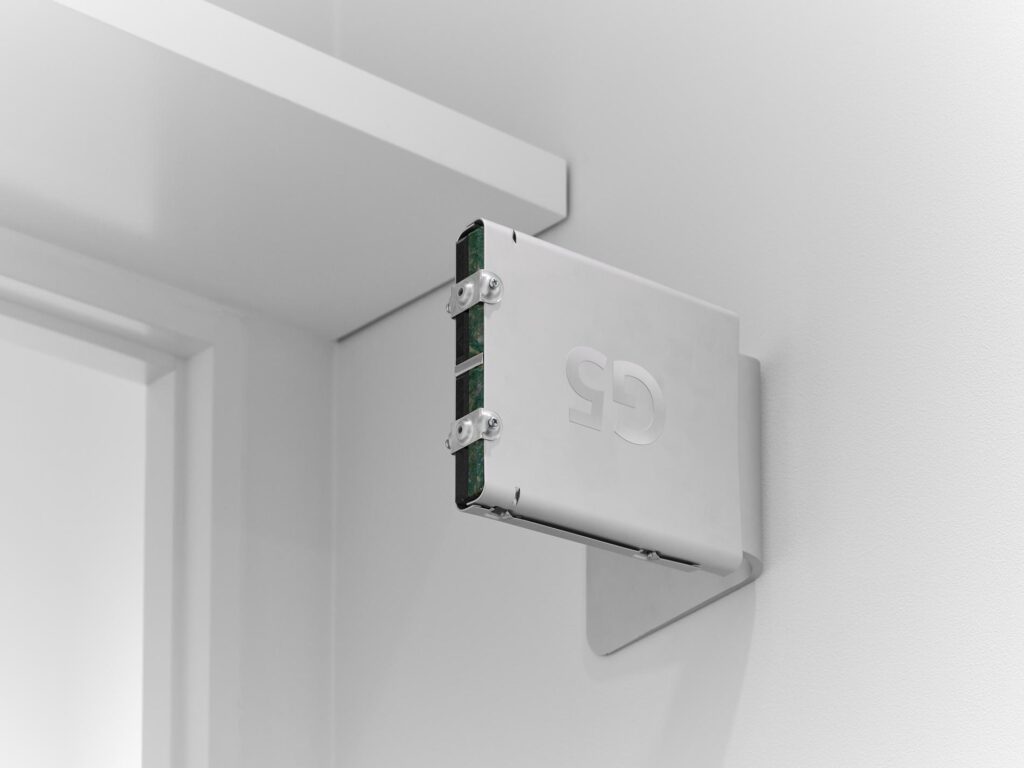
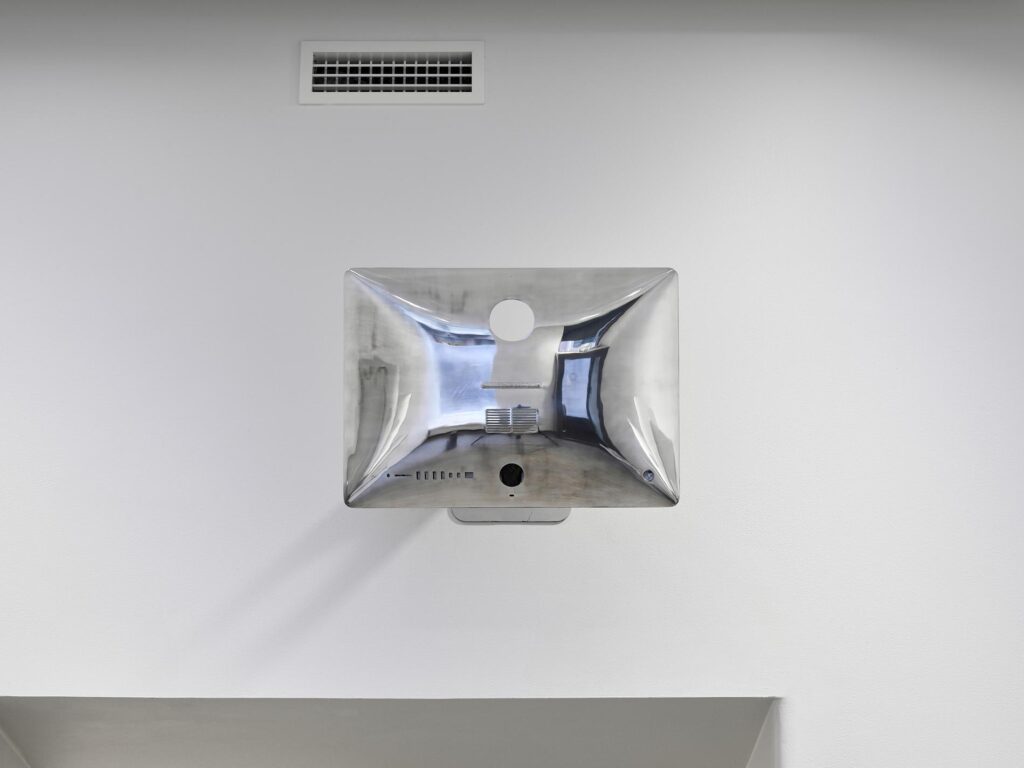
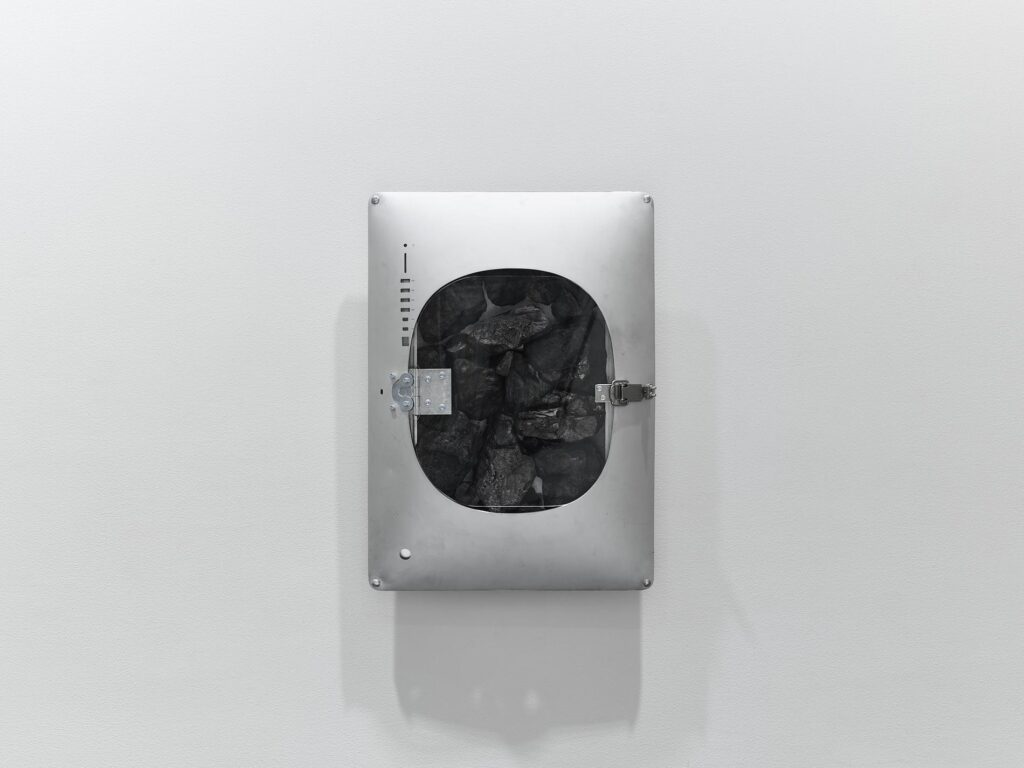
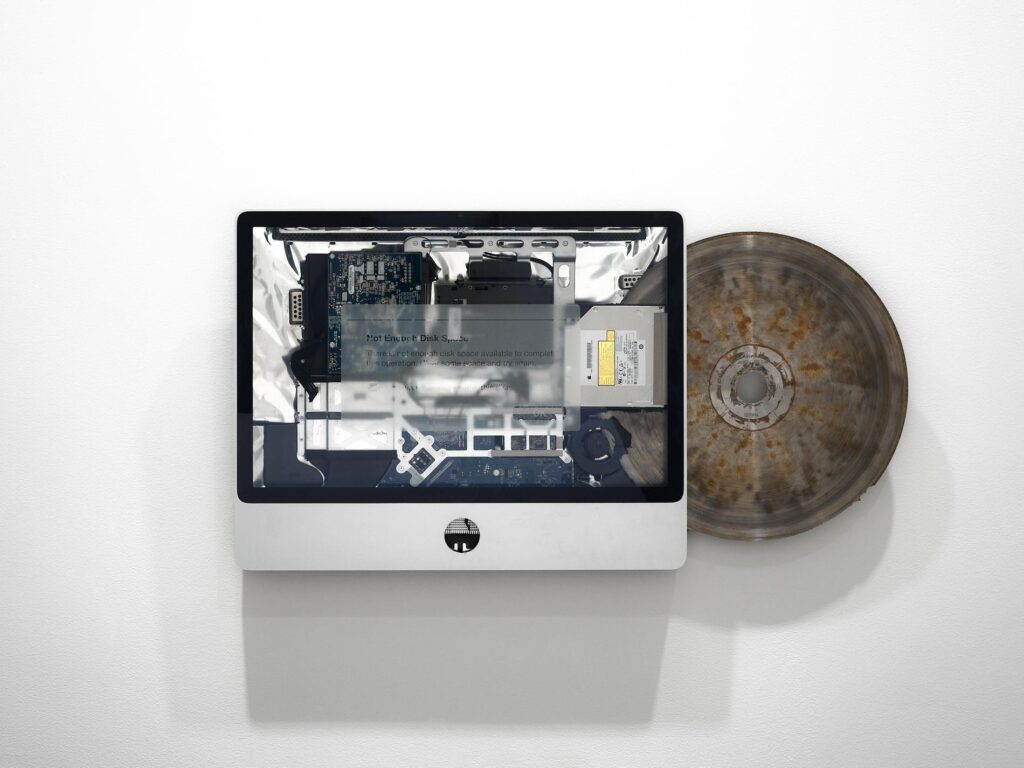
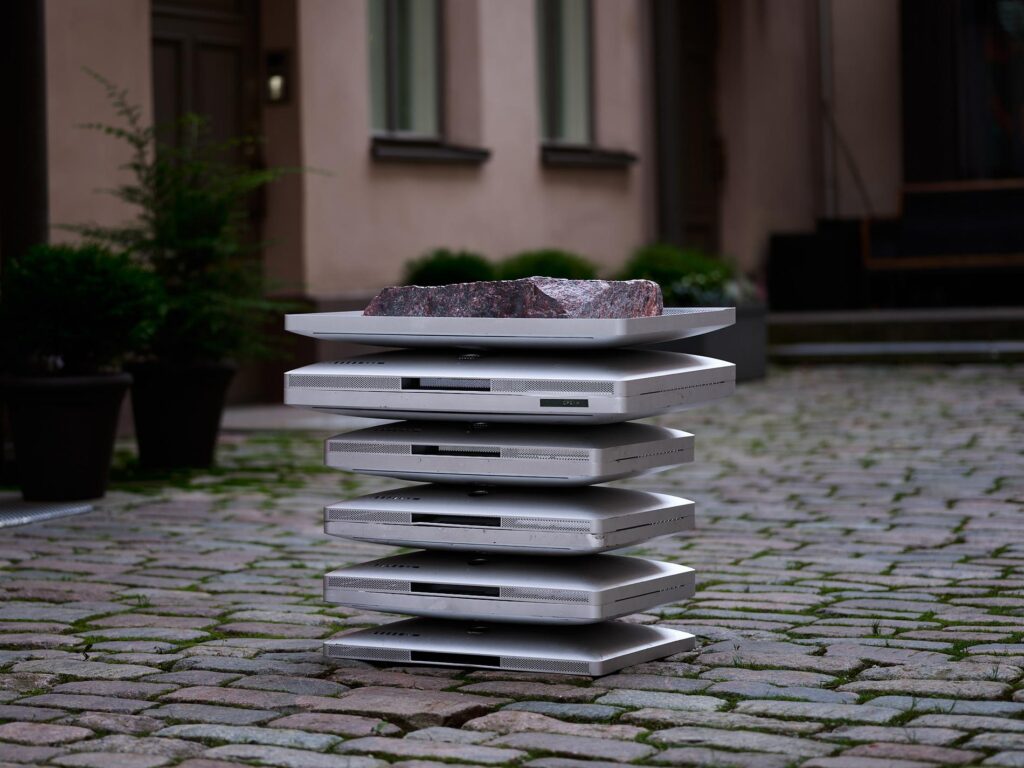
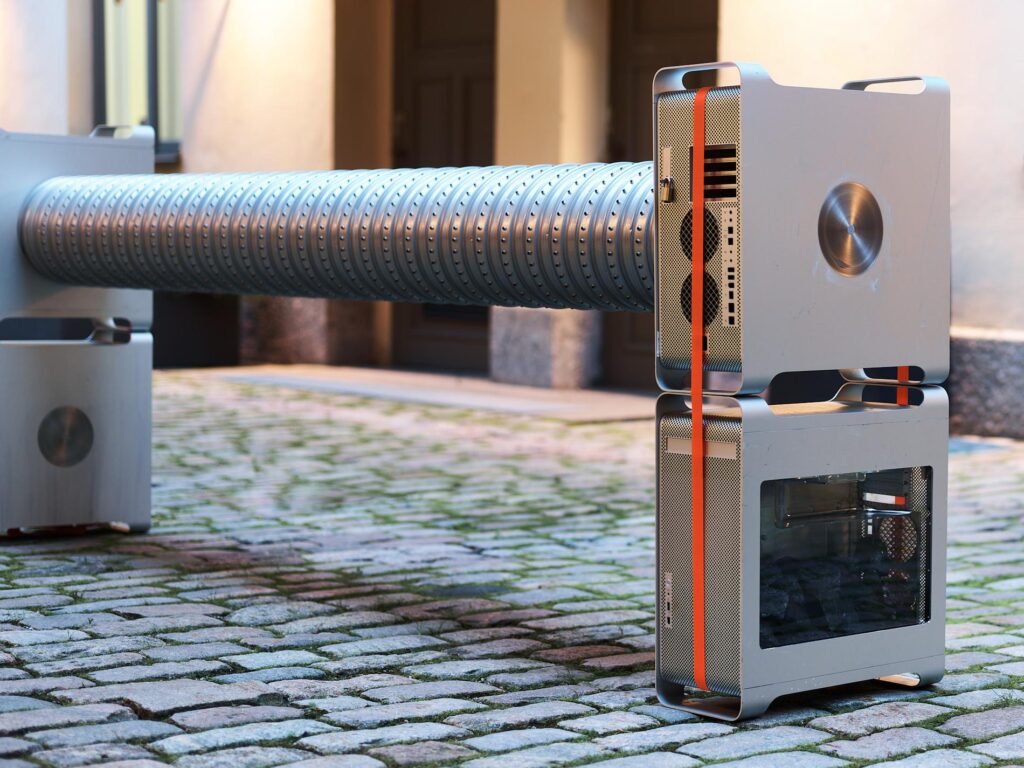
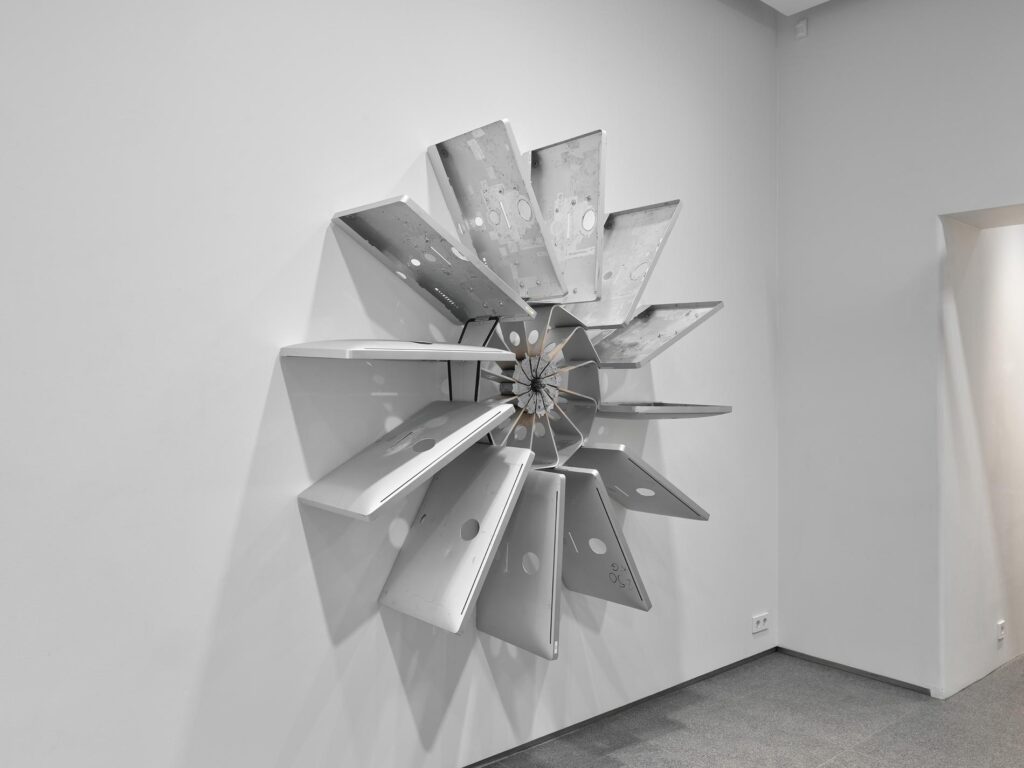
The Minerals of Extra
Erwin Laiho’s conceptual sculpting revolves around the interconnected ascent of materials from natural minerals to consumer and digital technology. Laiho explores the complex ontological relationship between matter, time, and the development of the universe. By transfiguring functional, digital devices, he strips them “of their pristine state of consumerist desire and physical autonomy in order to reveal an immanent vitality of the raw materials.”
Extra Terrestrial creates an idea of celestial bodies, life forms, and phenomena originating from our terrestrial environment. The sheer volume of hardware in the exhibition bluntly characterises the dominance of digital technology and the global internet infrastructures by raising concerns about their impacts. Laiho considers technology something fundamentally human. A part of our being. We create the world and our agencies with minerals. For the artist this is the main denominator ruling out the binary logic of both the human-nature and nature-technology dichotomies, as they for him are not elemental enough.
Working in the veins of Arte Povera and Mono-Ha, Laiho’s objective is not to obliterate the essence of the objects. Just the contrary. Ideally for him “what’s left are incredibly refined mineral materials with a palpable potential and an unobstructed honesty to them – much like their predecessors under our feet and in the night skies.” Whereas Laiho’s sculptural elements may have been built to serve only for a short second before the next hot design, the viewer of the artworks is placed on the deeper timeline of geology.
While the sculptures challenge the conventional ways we perceive our devices and subvert our spatial expectations, they engage in a very direct dialogue with the history and traditions of the medium of sculpture itself. The works feature existing, geometric elements that play with symmetry, balance, tension and the fundamental qualities that underlie the physical world.
Extra Terrestrial invites us to reflect on the profound ways in which silicon-based life forms shape our world and our relationship with it, challenging us to acknowledge how humanity exists in technology.
Text by Dr. Aura Seikkula
Erwin Laiho, Jani Leinonen, Riikka Hyvönen, Joonas Kota & Mari Keto
June 14–August 13, 2023
Zetterberg Gallery
Erwin Laiho, Jani Leinonen, Riikka Hyvönen, Joonas Kota & Mari Keto
June 14–August 13, 2023
Zetterberg Gallery
Erwin Laiho, Jani Leinonen & Joonas Kota
May 12-June 4, 2023
New works by Erwin Laiho, Jani Leinonen and Joonas Kota.
On show at Zetterberg Gallery from May 12-June 4, 2023
JANI LEINONEN
January 27–March 5, 2023
Zetterberg Gallery
THE MEANING OF A BULLET HOLE IN AN ARTWORK?
A bullet shot with a gun through an object is a mischievous target for interpretations. The act of shooting is so real, so violent, and so destructive in itself, that during these dark days, it is hard to see itas a symbol of anything else than the harsh reality we are witnessing. As we speak, bullets are piercing living bodies, destroying things and causing life-lasting traumas to people who remain alive in conflict zones near and far. The closer the bullet holes come to our home the more they shake our feeling of security.
Jani Leinonen’s new exhibition LOVE brings bullet holes really close, to the clean white space of Zetterberg Gallery in the center of Helsinki. All the artworks are pierced with real bullets – leaving a cracking hole in the glass and the art underneath. In the exhibition, the bullets have broken hearts and Coco Chanel No 5 perfume packages, and they have made cracks on otherwise soft birch wood panels. The bullet holes are the remnants of a deadly duel between two of the world’s most famous commercial mascots, and two recurring characters in Leinonen’s artistic oeuvre; fast food mascot Ronald McDonald and Kellogg’s Tony Tiger.
In Leinonen’s works the act of shooting is violence in itself but simultaneously a symbol of violence. According to philosopher Slavoj Žižek there are at least three forms of violence: subjective (crime, terror), objective (racism, hate-speech, discrimination), and systemic (the catastrophic effects of economic and political systems). Often one form of violence blunts our ability to see the others, raising complicated questions. These are the three levels of violence that Leinonen’s artworks play with.
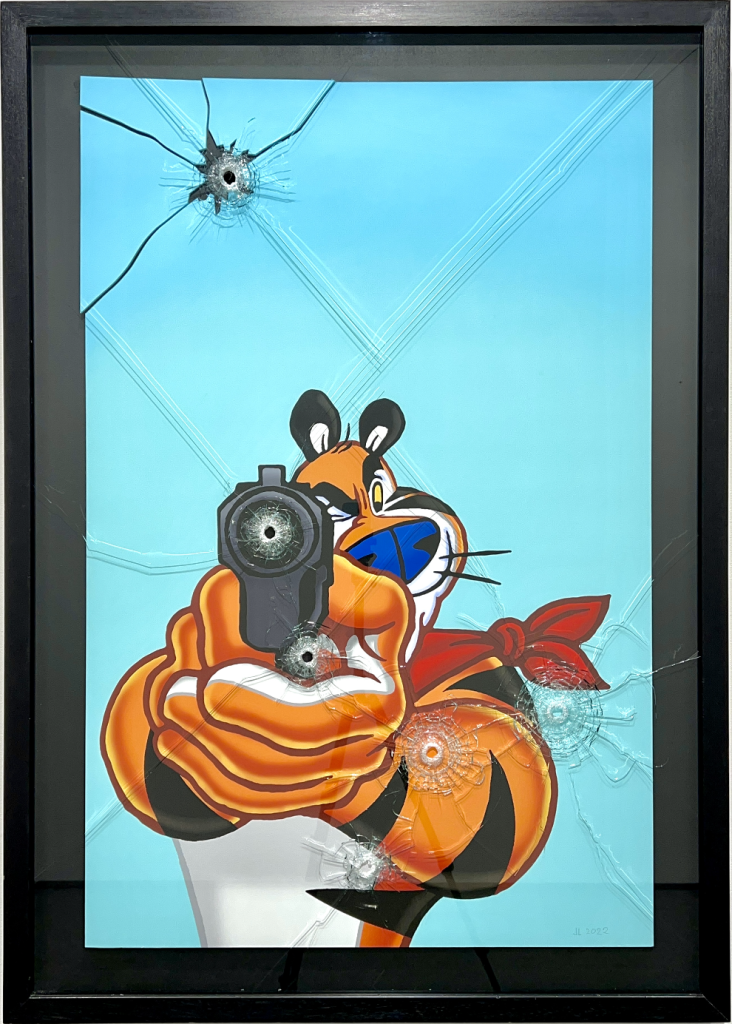
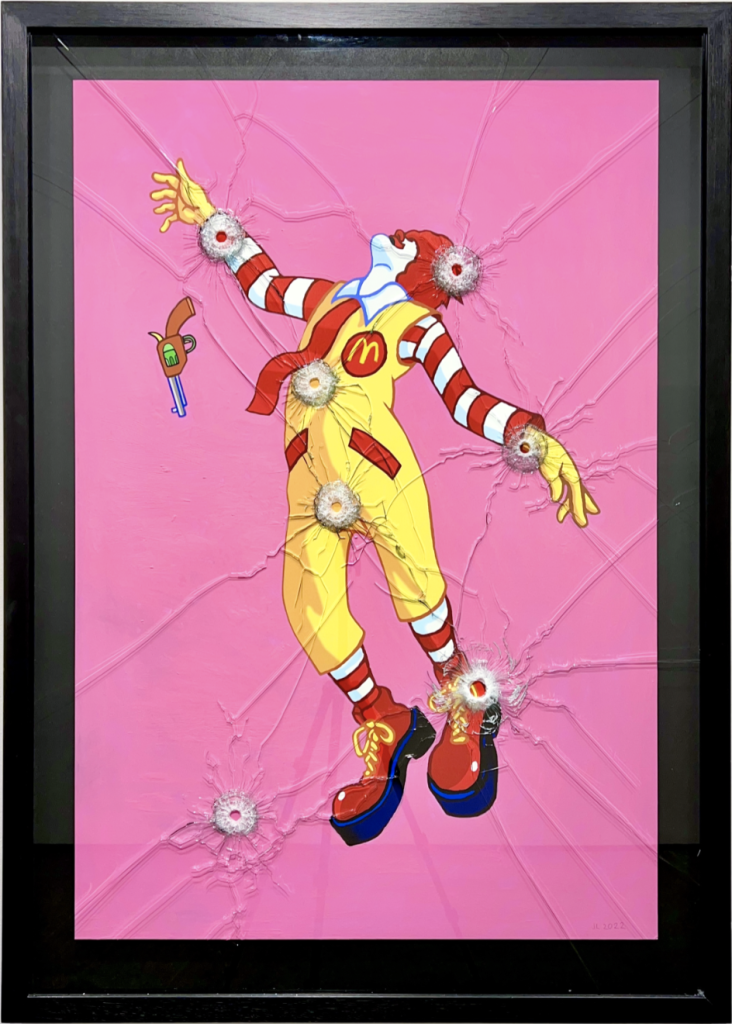
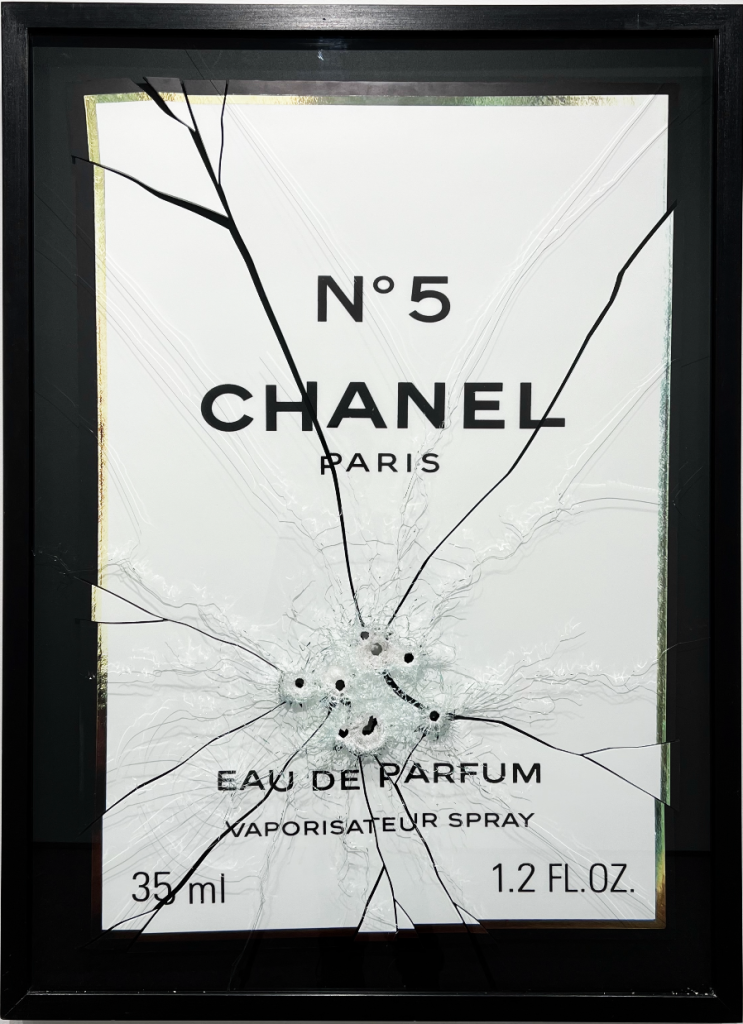
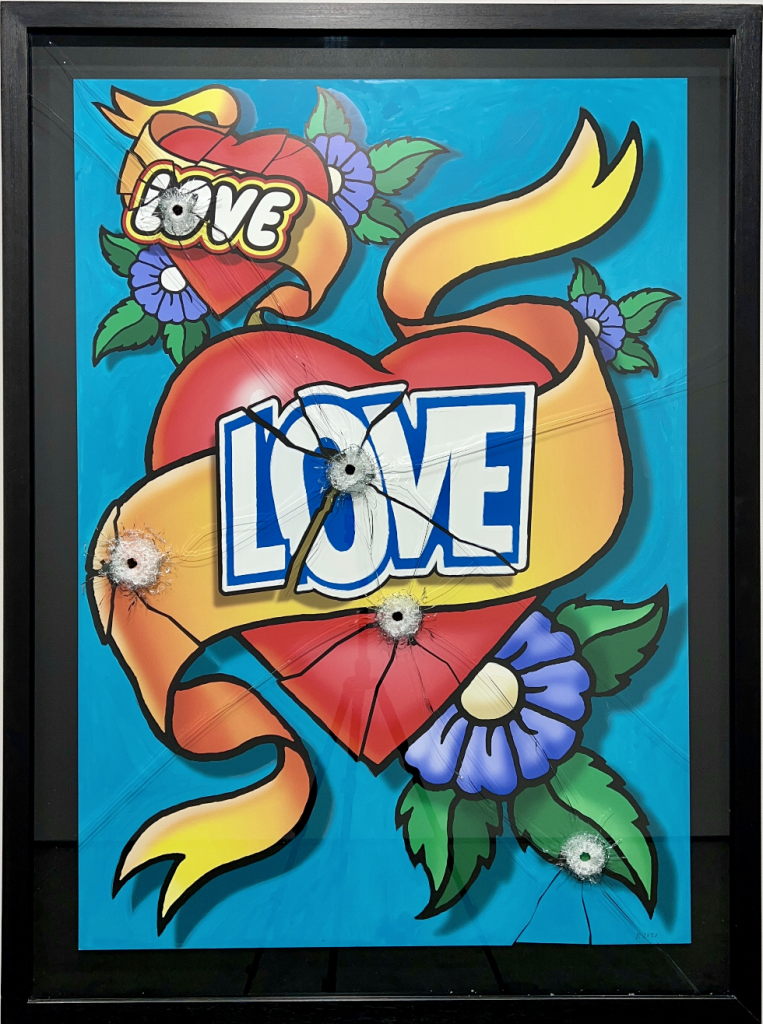
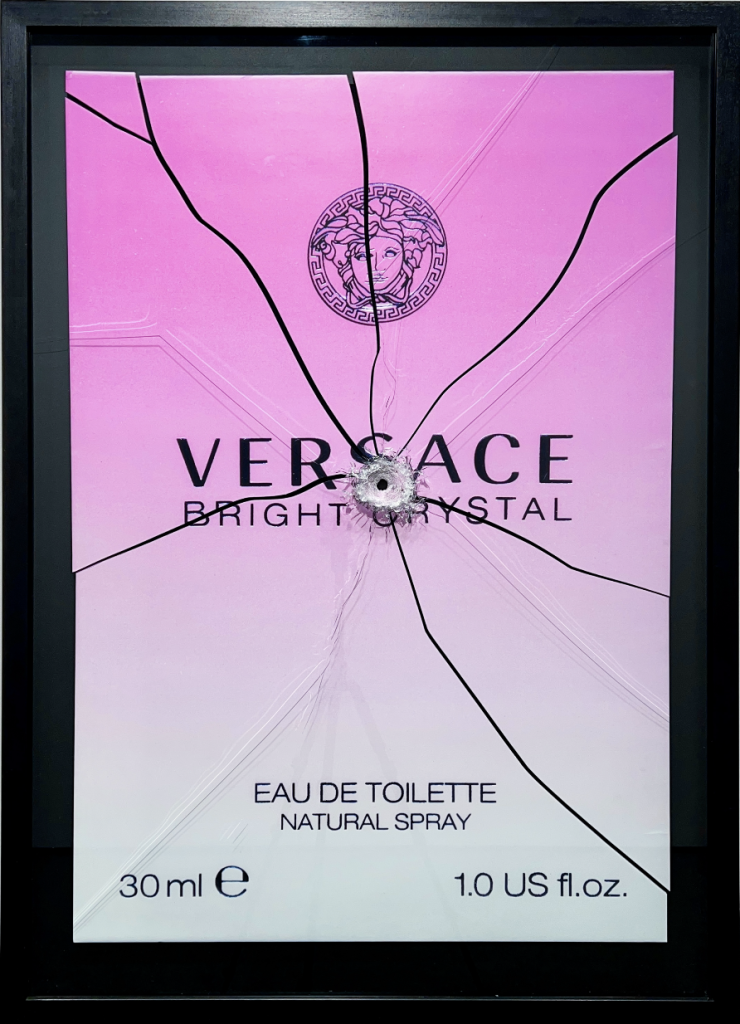
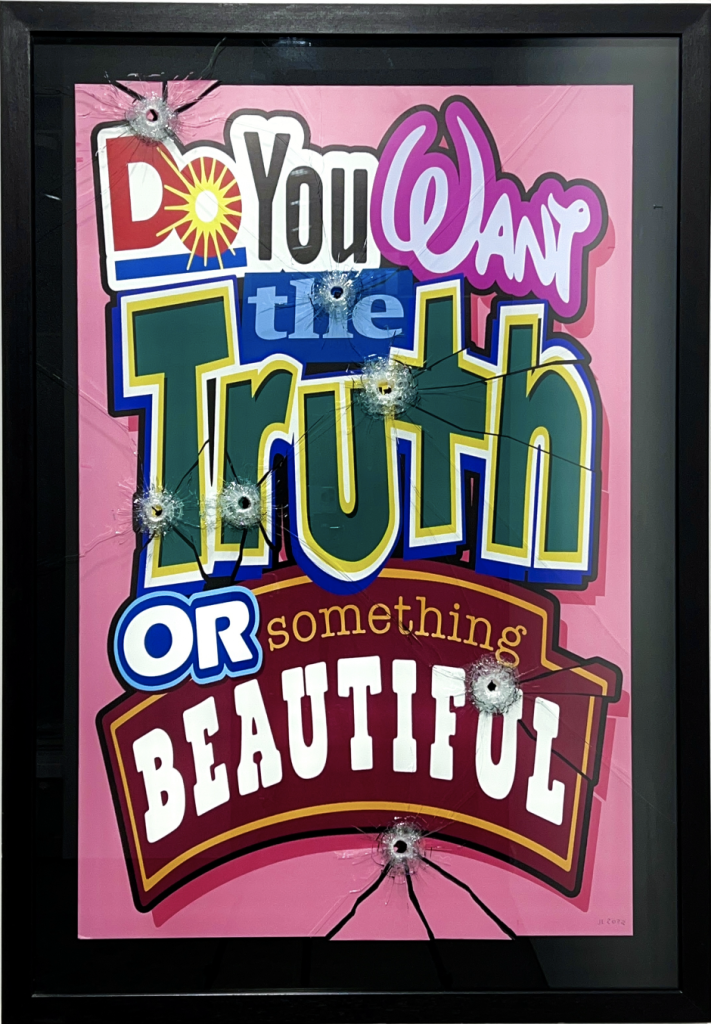
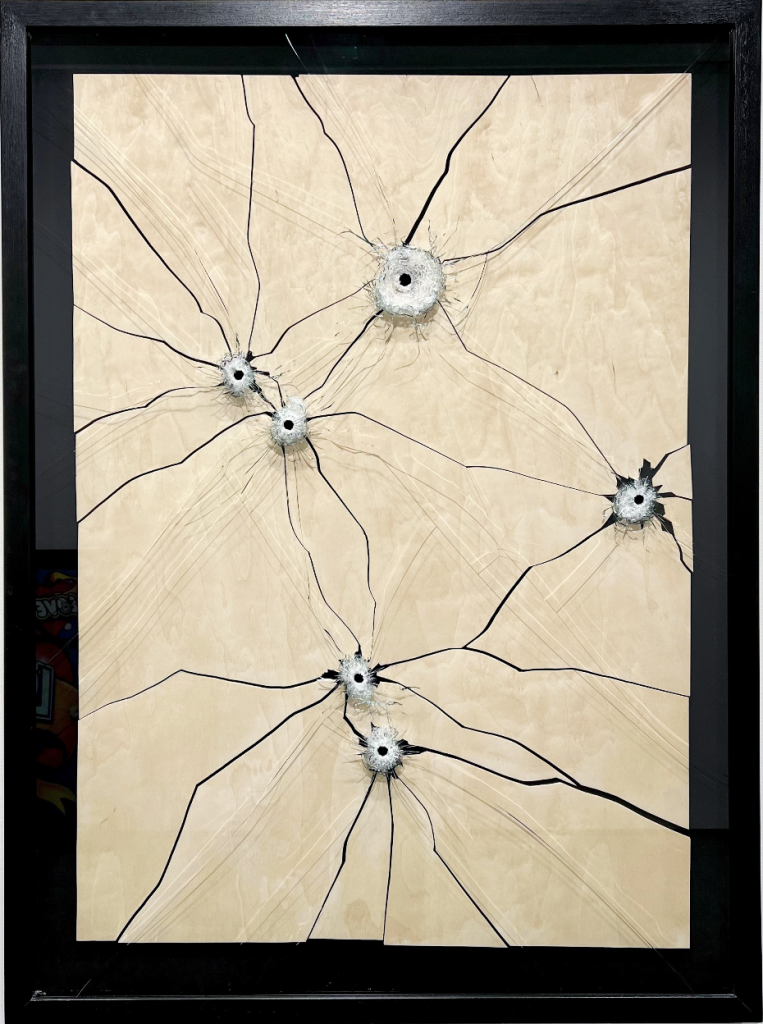
Jiri Geller, KAOS, Mari Keto, Erwin Laiho, Jani Leinonen & Sampsa
November 18–December 18, 2022
Zetterberg Gallery